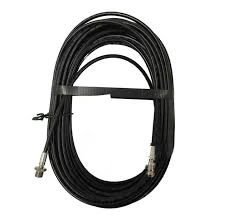remove power steering hose
Removing the Power Steering Hose A Step-by-Step Guide
Power steering is a crucial component in modern vehicles, allowing drivers to steer with ease. However, like any mechanical system, the power steering system may require maintenance or replacement at some point. One common task associated with power steering maintenance is removing the power steering hose. In this article, we will guide you through the process, ensuring you have the knowledge and confidence to tackle this task safely and efficiently.
Understanding the Power Steering Hose
The power steering hose is responsible for transferring hydraulic fluid from the power steering pump to the steering gear. Over time, these hoses can degrade due to heat, age, and the effects of fluid exposure, leading to leaks and other issues. If you notice a fluid leak under your vehicle or a stiff steering wheel, it may be time to check the power steering hose for damage.
Tools and Materials Required
Before you begin, it is essential to gather all the necessary tools and materials to ensure a smooth process. Here’s a list
- Socket and wrench set To remove fittings and fasteners. - Pliers To remove hose clamps. - Fluid container To catch any leaking power steering fluid. - Rags or towels For cleaning up spills. - Safety goggles To protect your eyes from fluid and debris. - Gloves To keep your hands clean and safe.
Step-by-Step Process
1. Safety First Before you start, make sure the vehicle is parked on a level surface. Turn off the engine, engage the parking brake, and wait for the engine to cool down if it was running.
2. Identify the Power Steering Hose Open the hood and locate the power steering pump. The power steering hose will be connected to this pump and run towards the steering gear. Usually, there are two hoses the high-pressure hose and the low-pressure return hose.
remove power steering hose

3. Prepare for Fluid Drainage Place the fluid container under the vehicle to catch any leaking power steering fluid. This step is essential because power steering fluid can damage your vehicle's paint and is harmful to the environment.
4. Remove the Hose Clamps Using pliers, carefully remove the hose clamps that are securing the power steering hose to the pump and the steering gear. Be cautious, as some fluid may start to drain out once the clamps are loosened.
5. Disconnect the Hose With the clamps removed, gently twist and pull the hose to disconnect it from the fittings. If it feels stuck, adding a little movement can help break the seal, but do not force it, as this could damage the fittings.
6. Inspect and Replace Once you have removed the hose, inspect it for any signs of damage, such as cracks or bulges. If the hose is damaged, it will need to be replaced with a new one. Make sure to purchase a hose that is compatible with your vehicle’s make and model.
7. Install the New Hose When installing the new hose, simply reverse the removal process. Slide the hose onto the fittings, ensure a snug fit, and re-secure the hose clamps. Make sure everything is aligned correctly and not under tension.
8. Refill Power Steering Fluid After installing the new hose, locate the power steering fluid reservoir, remove the cap, and refill it with the appropriate type of fluid as specified in your vehicle’s owner manual. Be careful not to overfill.
9. Test the System Start the engine and turn the steering wheel from lock to lock a few times. This action will help bleed any air from the system. Check for leaks around the hose fittings, and make sure the steering feels smooth and responsive.
10. Clean Up Finally, clean up any spilled fluid with rags or towels, and dispose of the old fluid properly, as per local regulations.
Conclusion
Removing and replacing the power steering hose may seem daunting, but with the right tools and a careful approach, it can be accomplished with ease. Regular maintenance of your power steering system is essential to ensure the longevity and performance of your vehicle. Always consult your owner’s manual or a professional mechanic if you are unsure about any steps in the process. Happy driving!
-
Ultimate Spiral Protection for Hoses & CablesNewsJun.26,2025
-
The Ultimate Quick-Connect Solutions for Every NeedNewsJun.26,2025
-
SAE J1401 Brake Hose: Reliable Choice for Safe BrakingNewsJun.26,2025
-
Reliable J2064 A/C Hoses for Real-World Cooling NeedsNewsJun.26,2025
-
Heavy-Duty Sewer Jetting Hoses Built to LastNewsJun.26,2025
-
Fix Power Steering Tube Leaks Fast – Durable & Affordable SolutionNewsJun.26,2025

